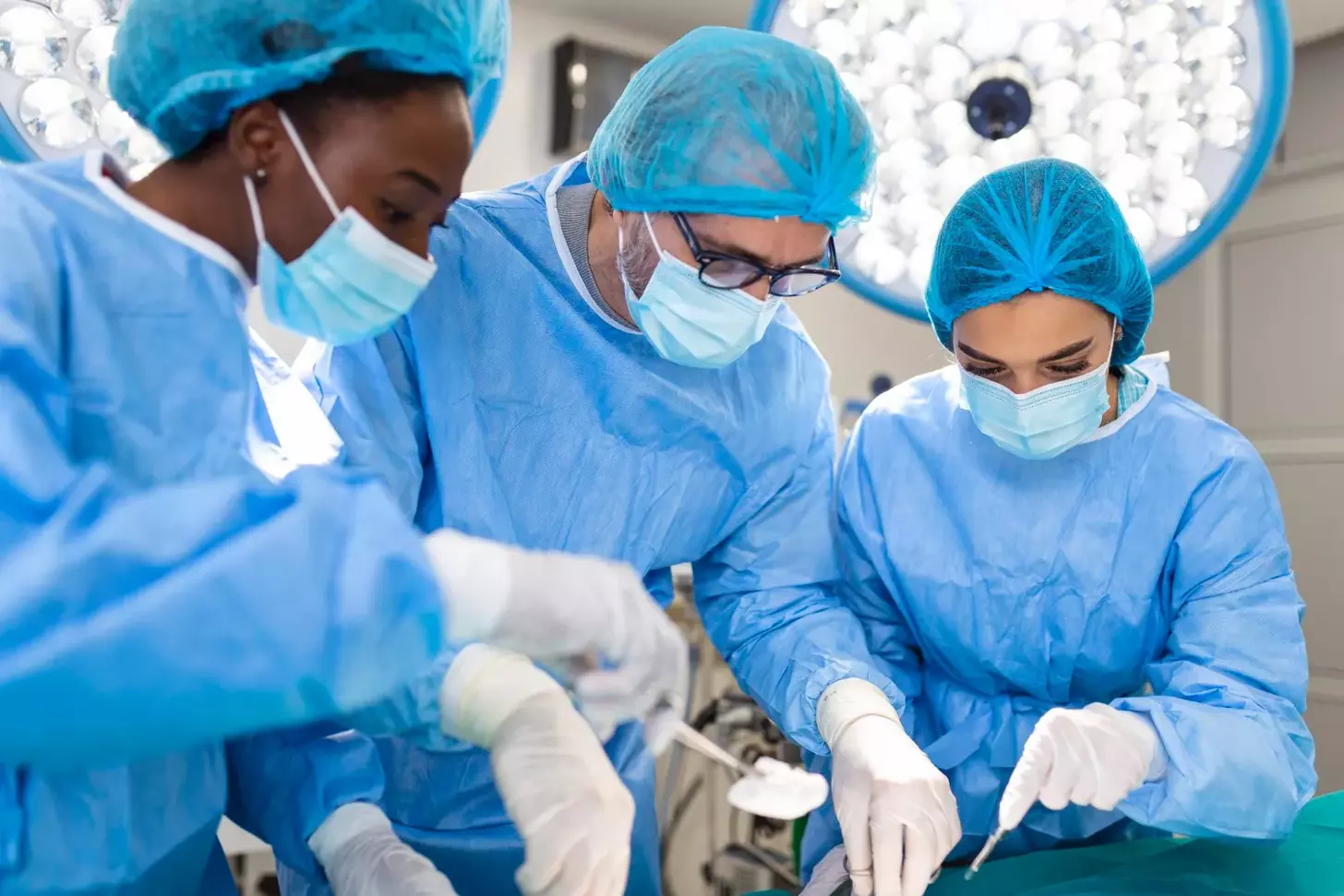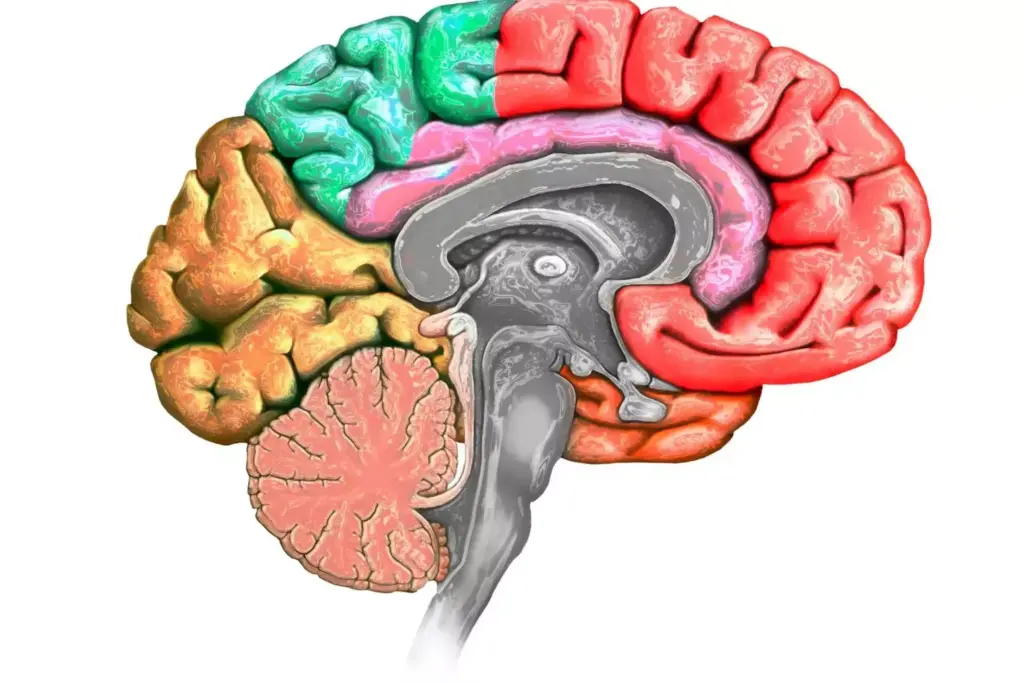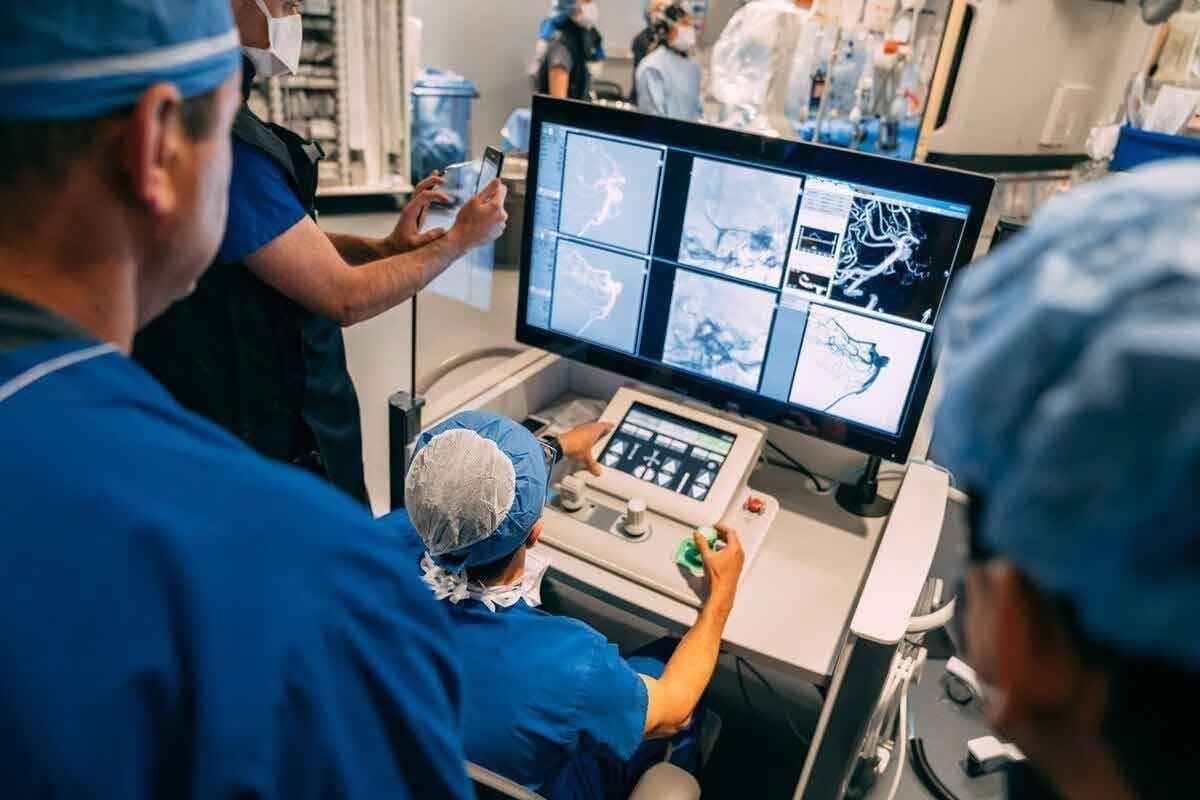Last Updated on November 26, 2025 by Bilal Hasdemir

Getting a brain tumor diagnosis can feel scary. But, thanks to new medical tech, treatment options have gotten much better. At Liv Hospital, we use the latest methods to give you the best care.
We do brain tumor surgery with top-notch techniques like image-guided surgery. We also offer minimally invasive options. This way, we aim for the best results for our patients. About 80% of brain tumor surgeries use a craniotomy method.
Our team is all about caring for you with kindness and the latest science. We’ll go into the details of brain cancer surgery and what you can expect in the next parts.
Key Takeaways
- Advanced surgical techniques improve treatment outcomes for brain tumor patients.
- Image-guided surgery and minimally invasive options are available.
- A craniotomy is a common approach for eligible brain tumor cases.
- Compassionate, evidence-based care is provided throughout the treatment process.
- Expert guidance is available from initial consultation to recovery.
Understanding Brain Tumors and Their Impact
Brain tumors, whether benign or malignant, are serious health issues that need quick medical care. We will look at the different types of brain tumors, their symptoms, and why early detection is key to better treatment results.
Types of Brain Tumors: Benign vs. Malignant
Brain tumors are divided into two main types: benign and malignant. Benign tumors are not cancerous and grow slower. They can cause problems because of where they are and how they press on brain tissue. Malignant tumors, being cancerous, can spread to other brain tissue, making treatment harder.
Recent studies show that knowing if a tumor is benign or malignant is key for choosing the right brain tumor treatment options. This knowledge helps doctors plan the best treatment.
Common Symptoms and Warning Signs
The symptoms of a brain tumor vary based on the tumor’s location, size, and type. Common signs include headaches that won’t go away, seizures, nausea, and changes in how you think or act. Spotting these signs early is critical for getting medical help on time.
“Early detection is key for effective treatment,” highlights the need to know the symptoms and seek medical help quickly.
A table below lists common symptoms of brain tumors:
| Symptom | Description |
|---|---|
| Headaches | Persistent and often worse in the morning |
| Seizures | Can occur without warning, depending on tumor location |
| Nausea and Vomiting | Often accompanies headaches |
| Cognitive Changes | Memory loss, confusion, or difficulty with concentration |
The Importance of Early Detection
Finding brain tumors early greatly improves treatment success. Early diagnosis means tumors are more likely to be treated well, lowering the risk of complications and improving survival chances. We stress the importance of regular check-ups and seeking medical help right away if symptoms don’t go away.
Brain tumor removal risks can be lessened with early detection and careful surgical planning. Knowing if a tumor can be removed is essential for choosing the best treatment.
In summary, understanding brain tumors and their effects is critical for patients and their families. By knowing the types of tumors, their symptoms, and the importance of early detection, people can make better decisions about their care and treatment.
Diagnosis and Initial Assessment
We use a detailed method to find out if you have a brain tumor. This careful process helps us understand the tumor’s type and how to treat it best.
Neurological Examination
The first step is a detailed check-up of your brain and nervous system. Our skilled doctors check your thinking, movement, and senses. They look for signs that might show you have a brain tumor.
Advanced Imaging Techniques
We use top-notch imaging to spot brain tumors. Our MRI and CT scans show where and how big the tumor is. This info is key to making a good treatment plan.
Biopsy Procedures
Sometimes, we need to take a sample of the tumor to confirm it. Our neurosurgeons do this carefully to keep you safe. Then, our pathologists study the sample to learn more about the tumor.
By looking at your check-up, scans, and biopsy results, we can find out what’s wrong. This way, we can make a treatment plan just for you. Our goal is to give you the best care possible.
Determining Surgical Candidacy
Not all brain tumors can be removed surgically. Figuring out if surgery is right is complex. Several important factors help decide if a patient is a good candidate for surgery.
Factors Affecting Surgical Decisions
Deciding on surgery for a brain tumor involves many things. These include the tumor’s location, size, and type. Also, the patient’s health and medical history are key. Important factors include:
- The tumor’s location and its proximity to critical brain structures
- The patient’s age and overall health status
- The presence of any comorbidities or medical conditions that may affect surgery
- The tumor’s type and grade, as determined by biopsy or imaging studies
When Surgery May Not Be Recommended
In some cases, surgery might not be the best choice for a brain tumor. This choice is made when surgery’s risks are too high. Reasons for not recommending surgery include:
- The tumor is located in a sensitive or inaccessible area of the brain
- The patient has significant medical comorbidities that increase surgical risks
- The tumor is highly malignant or has spread extensively
Understanding Your Tumor’s Operability
Figuring out if a brain tumor can be operated on is a team effort. A team of healthcare experts will look at many factors. They decide if surgery is safe and possible. Important things to consider are:
- Imaging studies to determine the tumor’s size, location, and relationship to surrounding structures
- Biopsy results to identify the tumor type and grade
- The patient’s overall health and ability to tolerate surgery
By looking at these factors, doctors can find the best treatment for each patient.
Choosing the Right Medical Team
Starting your journey to remove a brain tumor means finding a skilled medical team. The right team’s experience can greatly affect your surgery’s success and your recovery.
Finding a Specialized Neurosurgeon
Finding a neurosurgeon with brain tumor removal experience is key. Look for someone with a good track record and who uses the latest techniques. It’s also important to find a neurosurgeon who stays updated with new methods.
Ask your primary care doctor for recommendations or look for suggestions from support groups. Also, check the neurosurgeon’s credentials like board certification and fellowship training in neurosurgery. This shows they are well-qualified.
The Importance of Multidisciplinary Care
Brain tumor surgery is more than just the operation. It involves a team that works together from start to finish. This team includes neurosurgeons, neurologists, oncologists, radiologists, and rehabilitation specialists.
This team approach is critical for managing the complexities of non malignant brain tumor surgery and brain cancer removal. It ensures you get the best care, from diagnosis to recovery, improving your chances of success.
| Specialist | Role in Brain Tumor Surgery |
|---|---|
| Neurosurgeon | Performs the surgery to remove the brain tumor. |
| Neurologist | Evaluates neurological function before and after surgery. |
| Oncologist | Manages adjuvant treatments such as chemotherapy or radiation therapy. |
| Radiologist | Provides imaging studies to diagnose and monitor the tumor. |
| Rehabilitation Specialist | Helps in the recovery of physical and cognitive functions post-surgery. |
Questions to Ask Your Surgical Team
It’s important to talk openly with your surgical team before surgery. Ask them questions like:
- What experience do you have with brain tumor surgery recovery procedures?
- What are the possible risks and complications of my surgery?
- What are the expected results, and how will my recovery be managed?
- Are there other treatments or surgical methods that might be better for me?
Understanding these answers will help you feel more confident and prepared for what’s ahead.
The Surgical Removal of Brain Tumor: Standard Approach
Removing brain tumors often starts with a surgery called craniotomy. This method has been key in brain tumor surgery for years. It helps remove tumors effectively while protecting the brain around them.
Craniotomy: The Gold Standard Procedure
Craniotomy is the top choice for removing brain tumors. It involves taking out a part of the skull to reach the brain. This lets surgeons see and take out the tumor clearly.
We use the latest imaging and navigation tools for precise surgery.
Craniotomy’s main benefits are:
- Direct access to the tumor
- Ability to remove large or complex tumors
- Potential for complete tumor removal
More than 80% of cases use craniotomy, showing its vital role in brain tumor surgery.
Awake Craniotomy for Functional Areas
When tumors are near important brain parts, like those for speech or movement, an awake craniotomy is used. This keeps the patient awake during surgery. It lets our team watch brain function closely and avoid harming key areas.
The benefits of awake craniotomy are:
- Enhanced preservation of neurological function
- Reduced risk of post-operative deficits
- More precise tumor removal
Skull Base Approaches for Deep Tumors
For tumors deep in the brain or at the skull base, special methods are needed. These approaches go through the skull base. They reduce the need to move a lot of brain tissue.
Skull base methods have several advantages, including:
- Reduced risk of brain damage
- Improved access to deep-seated tumors
- Potential for better cosmetic outcomes
By choosing the right surgery for each patient, we can improve their life quality and outcomes.
Minimally Invasive Surgical Options
There are new ways to treat brain tumors that don’t need big surgeries. These methods are good for people who can’t have open surgery. They help reach tumors in hard-to-get places.
Endoscopic Endonasal Surgery
Endoscopic endonasal surgery lets doctors remove tumors through the nose. It’s a way to avoid big cuts in the skull. This means less time recovering and fewer risks. It works well for tumors in the pituitary gland or at the skull base.
MRI-Guided Laser Interstitial Thermal Therapy (LITT)
LITT uses a laser to kill tumor cells without harming healthy tissue. It’s great for tumors deep in the brain. MRI helps doctors see what they’re doing in real time, making it safer and more precise.
Fluorescence-Guided Resection Techniques
Fluorescence-guided resection uses a special dye to show tumor cells. This helps doctors remove tumors better without harming the brain.
Stereotactic Radiosurgery as an Alternative
Stereotactic radiosurgery (SRS) is a non-surgical way to treat tumors. It uses high doses of radiation on specific brain areas. It’s good for small or hard-to-reach tumors.
| Treatment Option | Description | Benefits |
|---|---|---|
| Endoscopic Endonasal Surgery | Removal of tumors through the nasal cavity | Avoids craniotomy, reduces recovery time |
| MRI-Guided LITT | Laser therapy guided by MRI | Precise destruction of tumor cells, spares healthy tissue |
| Fluorescence-Guided Resection | Tumor removal aided by fluorescent dye | Improves completeness of tumor removal, preserves critical structures |
| Stereotactic Radiosurgery | High-dose radiation to precise brain areas | Non-invasive, effective for small or inoperable tumors |
These new treatments offer hope for brain tumor patients. They show how far we’ve come in treating these diseases. As technology gets better, we’ll see even more ways to help patients.
Advanced Surgical Technologies in 2024
In 2024, neurosurgeons use top-notch technologies to make brain tumor surgeries more precise and safe. These new tools are changing neurosurgery, giving patients better treatment choices.
Image-Guided Navigation Systems
Image-guided navigation systems are key in today’s neurosurgery. They use MRI and CT scans to guide surgeons in real-time. This helps them find tumors and avoid harming the brain.
These systems have made brain tumor surgeries better. They help surgeons be more precise, leading to better recovery and fewer complications.
Intraoperative MRI and Ultrasound
Intraoperative MRI and ultrasound are vital for checking surgery progress in real-time. MRI gives detailed brain images during surgery. This lets surgeons see how much tumor they’ve removed and make changes if needed.
Ultrasound also helps by showing the tumor’s edges and the brain around it. These tools make brain tumor surgeries safer and more effective.
Robotic Assistance in Neurosurgery
Robotic systems are becoming more common in neurosurgery. They offer enhanced visualization and precise manipulation of tools. This makes complex surgeries more accurate.
Robotic help is great for delicate surgeries that need high precision. It’s very useful for operations near critical brain areas.
Brain Mapping and Neurophysiological Monitoring
Brain mapping and neurophysiological monitoring are key for keeping brain function safe during surgery. They map brain areas and watch neurological activity in real-time.
By knowing where important brain areas are, surgeons can avoid harming them. This approach helps patients have the best outcomes, with both tumor removal and brain function preservation.
Preparing for Brain Tumor Surgery
The journey to brain tumor surgery is complex. It includes medical checks and getting emotionally ready. Being well-prepared is key for a smooth surgery.
Medical Evaluations and Clearance
Before surgery, patients must go through detailed medical checks. These tests include blood work, imaging, and heart checks. They help us see if you’re ready for surgery.
We look for any risks and plan to avoid problems. Our team talks with you to make sure you’re as ready as possible.
Medication Adjustments
Some medicines can change how surgery or recovery goes. We check your current meds and supplements. We might need to change them.
For example, we might stop blood thinners to lower bleeding risks. We give clear instructions on managing your meds.
Mental and Emotional Preparation
Surgery for brain tumors can be stressful. We suggest getting support from loved ones or mental health experts.
Knowing what to expect can also help. We give you all the info and resources you need to feel in charge.
What to Bring to the Hospital
On surgery day, bring important things. This includes insurance cards, ID, comfy clothes, and personal items for comfort.
It’s also good to have someone you trust with you. They can help and support you.
Being well-prepared can make a big difference. Our team is here to help you every step of the way. We want to make sure you get the best care.
What Happens During the Procedure
Brain tumor surgery is a complex process with several key steps. The team aims to remove the tumor safely, keeping the brain tissue intact. They ensure the patient’s safety throughout.
Anesthesia Administration
The first step is giving anesthesia. Anesthesiologists make sure the patient is comfortable and pain-free. The type of anesthesia depends on the surgery and the patient’s health.
General anesthesia is often used. It keeps the patient asleep and motionless. The anesthesiologist watches the patient’s vital signs closely, adjusting the anesthesia as needed.
Surgical Access and Approach
With the patient under anesthesia, the team accesses the brain tumor. They make a planned incision in the scalp and do a craniotomy. This is when they temporarily remove a part of the skull.
Tumor Removal Techniques
The main part of the surgery is removing the tumor. Neurosurgeons use microsurgical resection to see the tumor clearly. They aim to remove as much of the tumor as possible without harming the brain.
- Microsurgical techniques for precise tumor removal
- Use of advanced imaging for real-time guidance
- Intraoperative monitoring to preserve brain function
Closure and Immediate Post-Op Care
After removing the tumor, the team closes the incision. They replace the bone flap and close the scalp incision. The patient then goes to the intensive care unit (ICU) for close monitoring.
The medical team watches the patient’s vital signs and neurological status. They manage pain and any immediate complications.
Recovery and Rehabilitation Process
The recovery and rehabilitation process after brain tumor surgery helps patients regain strength and cognitive function. We support patients through this critical phase, ensuring they receive complete care.
Immediate Post-Surgical Period
The immediate post-surgical period is key for watching for complications and managing pain. Close observation by our medical team ensures any issues are quickly addressed.
Patients usually stay in the ICU for a while before moving to a regular hospital room.
Hospital Stay Duration and Care
The length of hospital stay varies based on the individual’s condition and surgery complexity. Personalized care plans are made to meet each patient’s specific needs.
- Monitoring of vital signs and neurological status
- Pain management
- Early mobilization to prevent complications
Physical and Occupational Therapy
Physical and occupational therapy are key in the rehabilitation process. They help patients regain physical strength and independence. Tailored therapy programs are designed to meet individual needs and goals.
These therapies include exercises to improve balance, strength, and coordination. They also help with daily activities.
Cognitive Rehabilitation
Cognitive rehabilitation is vital in the recovery process. It focuses on improving memory, attention, and problem-solving skills. Specialized therapists work with patients to develop strategies for cognitive improvement.
Rehabilitation is a critical part of the recovery process. We are committed to supporting our patients every step of the way.
Conclusion: Living Well After Brain Tumor Surgery
Going through brain tumor surgery is a big step towards getting better. Knowing what to expect can ease worries. We’ve looked at new surgical methods and technologies that make recovery better.
After surgery, it’s important to follow up and get support. With the right care, patients can live well. Our team helps international patients get the best care during their treatment.
Thanks to new medical tools and techniques, surgery outcomes have gotten much better. The type of tumor, where it is, and the patient’s health all play a part in recovery. Choosing a skilled medical team and following a personalized rehab plan can help a lot.
At our place, we aim to give top-notch healthcare and support to international patients. We want to help our patients understand and manage their recovery journey.
FAQ
What is brain tumor surgery?
Brain tumor surgery is a complex procedure. It involves removing a tumor from the brain. We use advanced techniques and cutting-edge technology to ensure the best outcomes for our patients.
What are the types of brain tumors that can be removed surgically?
Both benign and malignant brain tumors can be removed surgically. The decision to operate depends on the tumor’s location, size, and the patient’s overall health.
How is a brain tumor diagnosed?
Diagnosing a brain tumor involves neurological examinations and advanced imaging. Techniques like MRI and CT scans are used. Biopsy procedures help determine the tumor’s type and extent.
What factors determine whether a brain tumor is operable?
The operability of a brain tumor depends on its location, size, and the patient’s health. We assess these factors to determine the best treatment.
What is craniotomy, and when is it used?
Craniotomy is a surgical procedure that involves temporarily removing a portion of the skull. It is used to access the brain, often for large or complex tumors.
What are minimally invasive surgical options for brain tumors?
Minimally invasive options include endoscopic endonasal surgery and MRI-guided LITT. Fluorescence-guided resection techniques are also used. These approaches can be used alone or with traditional craniotomy.
How do advanced surgical technologies improve brain tumor surgery?
Advanced technologies like image-guided navigation systems and intraoperative MRI enhance precision and safety. Robotic assistance and brain mapping also play a role.
How can I prepare for brain tumor surgery?
Preparing for surgery involves medical evaluations and medication adjustments. Mental and emotional preparation is also key. We guide you on what to expect and how to prepare for surgery.
What happens during the recovery and rehabilitation process?
After surgery, patients undergo a recovery and rehabilitation process. This includes immediate post-surgical care, a hospital stay, and therapies like physical and cognitive rehabilitation.
Can I remove a brain tumor without surgery?
In some cases, alternative treatments like stereotactic radiosurgery may be considered. But, surgical removal is often the primary treatment for many brain tumors.
How do I choose the right medical team for brain tumor surgery?
Choosing the right team involves finding a specialized neurosurgeon and a multidisciplinary care team. Ask about their experience, approach, and support services.
What are the risks associated with brain tumor removal?
Risks include infection, bleeding, and neurological complications. We discuss these risks with our patients and take steps to minimize them.
Can a brain tumor recur after surgical removal?
Yes, there is a risk of recurrence, mainly for malignant tumors. We monitor our patients closely after surgery and recommend follow-up treatments as needed.
How long does it take to recover from brain tumor surgery?
Recovery time varies based on individual factors, surgery type, and tumor characteristics. We provide personalized guidance on what to expect during recovery.








